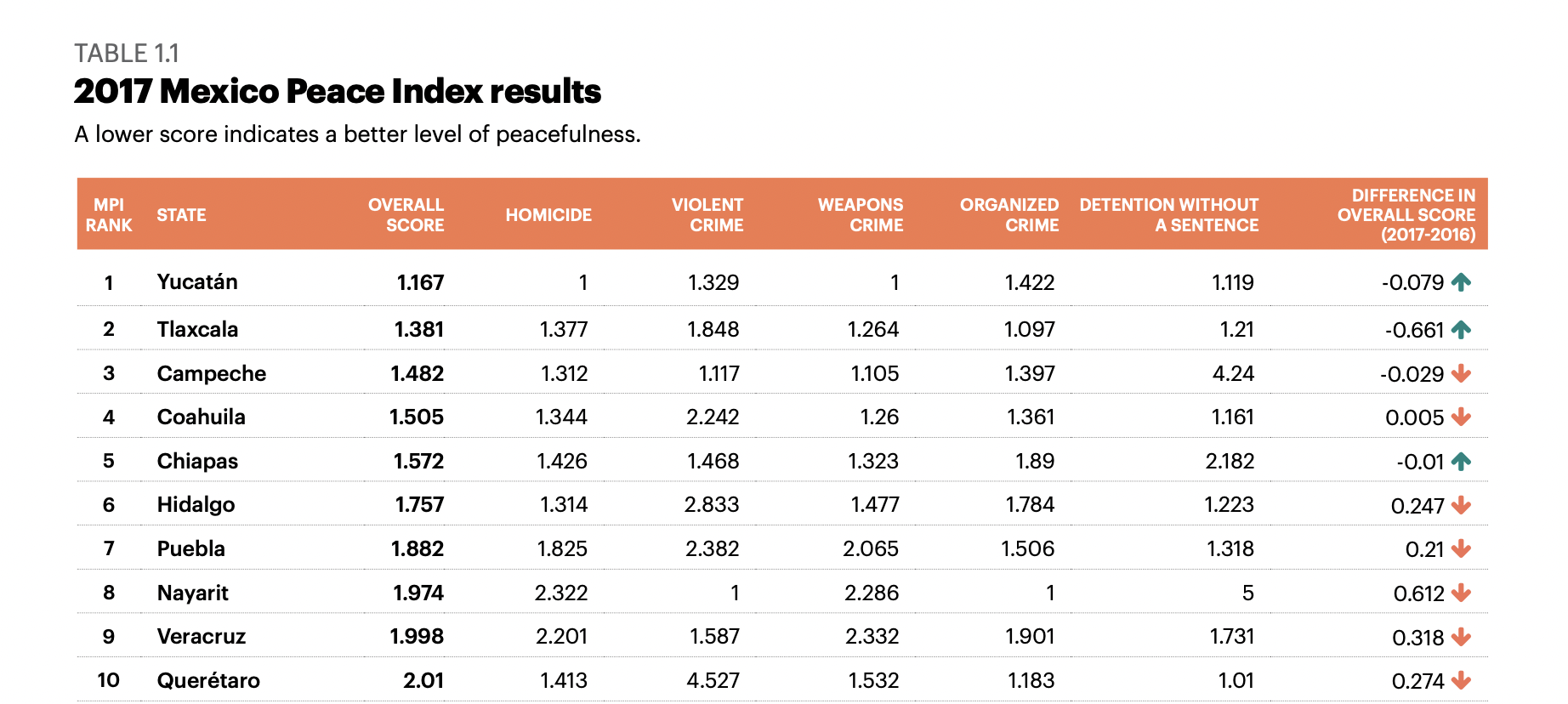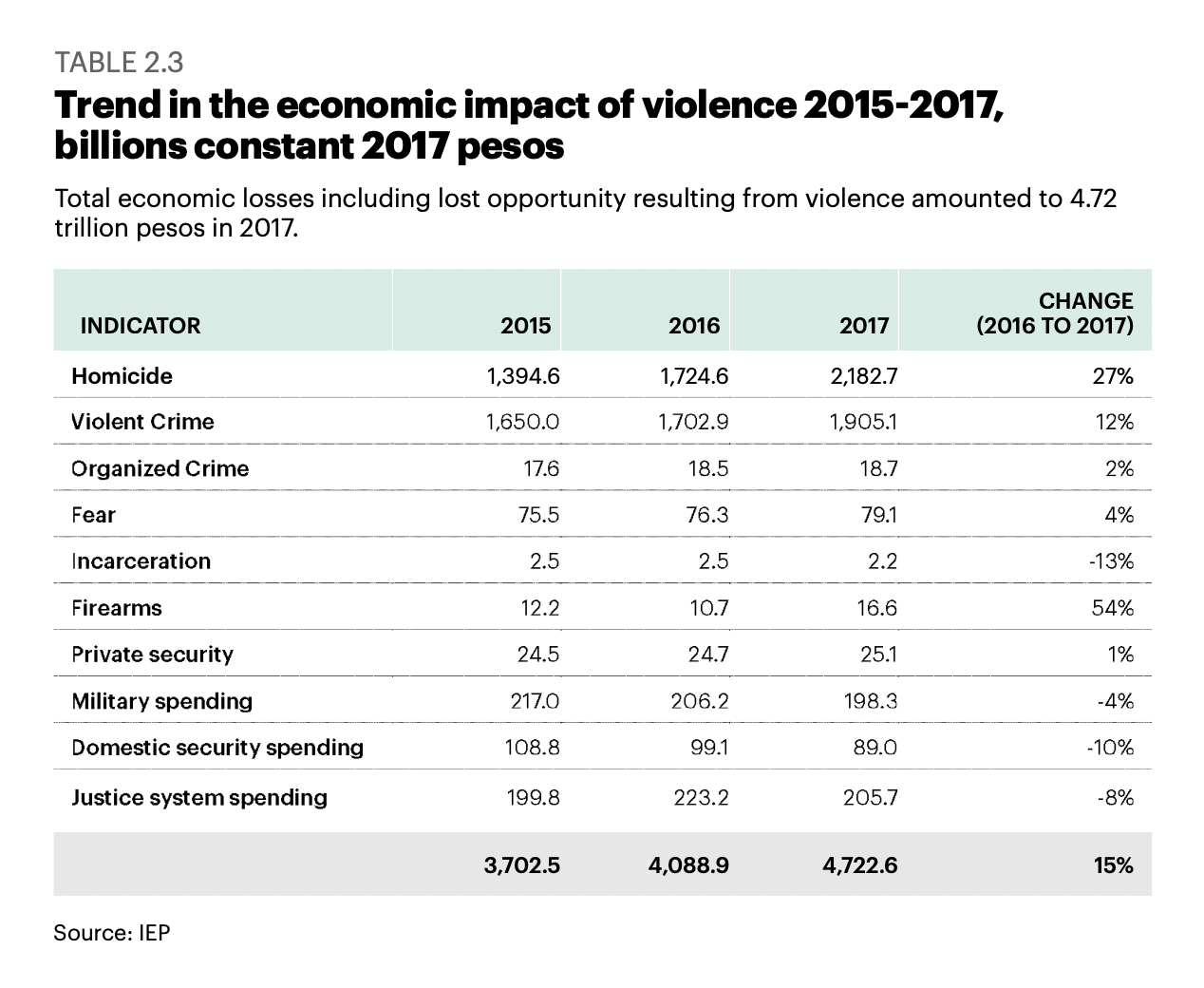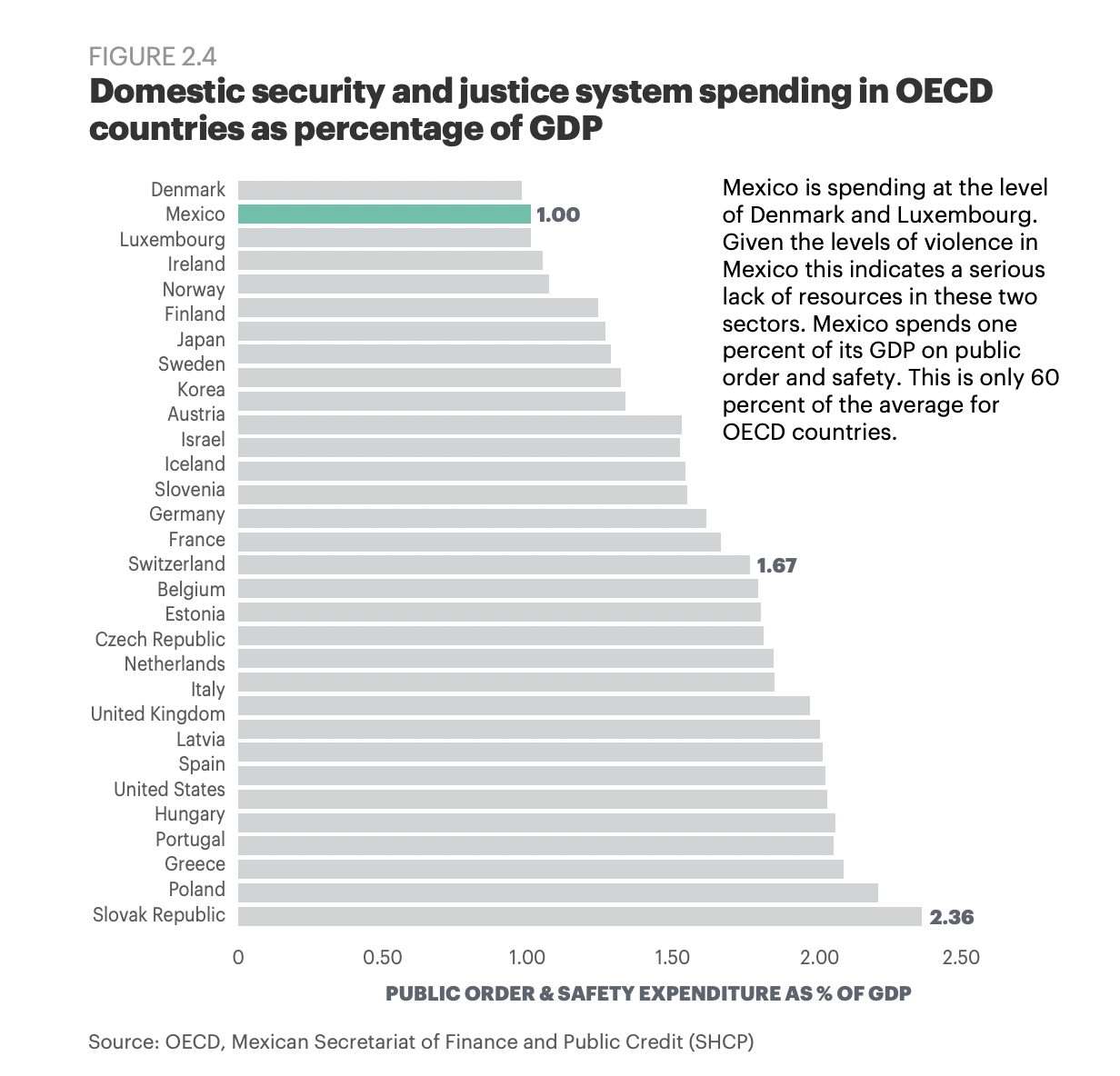The Mexico Peace Index 2018 launched last week. Here’s what you need to know – in three charts.
The 2018 Mexico Peace Index (MPI), produced by the Institute for Economics and Peace (IEP), provides a comprehensive measure of peacefulness in Mexico.
The report analyses the dynamics of violence in Mexico and the strengths and weaknesses of the attitudes, institutions and structures, known as Positive Peace, needed to substantially lower the rates of violence.
The report also estimates the significant economic impact of violence to the Mexican economy and the need to increase the level of investment in violence containment.
Finally, the report provides strong quantitative evidence to aid in the development of policies to create a more peaceful society. The research is of assistance to policymakers, researchers, business leaders and the general public in building peace in Mexico.
Yucatán was once again the most peaceful state in Mexico in 2018, followed by Tlaxcala, Campeche, Coahuila and Chiapas, with all of these states apart from Coahuila improving their peacefulness. Only seven states were able to improve in 2017.

The economic impact of violence in Mexico was estimated to be 4.72 trillion pesos (US$249 billion) in 2017, equivalent to 21% of Mexico’s GDP. This represents a 15% increase from 2016, and reflects the country’s deterioration in peacefulness.

Mexico’s spending on domestic security and justice is at the same level as Denmark and Luxembourg.
Given the levels of violence in Mexico this indicates a serious lack of resources in these two sectors. Mexico spends one percent of its GDP on public order and safety. This is only 60% of the average for OECD countries.

The MPI is based on the work of the Global Peace Index, which is the leading measure of global peacefulness and has been produced by IEP every year since 2007.
This is the fifth annual edition of the MPI, setting out the key trends, patterns and drivers of peace in Mexico, while also highlighting the most significant policy opportunities available to governments.